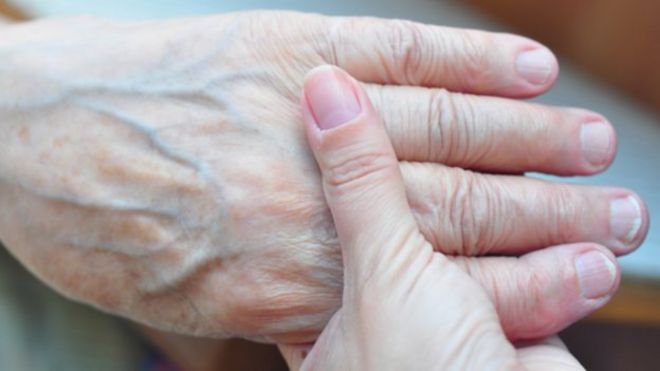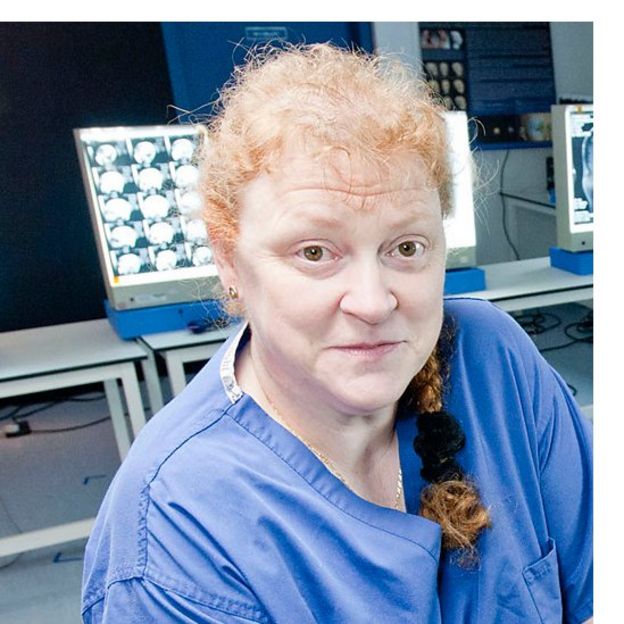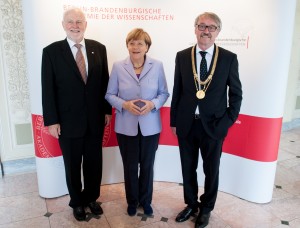- 2018年 1月 24日
2018年1月24日 星期三
Is There A Ticking Time Bomb Under The Arctic?
There is more carbon in permafrost than all of the carbon humans have put in the atmosphere since the Industrial Revolution. And once it thaws, it could be a big wild card of climate change.
Just what exactly is permafrost? And what is happening now that it's warming up? To find out, we enter the Arctic circle's secret world of ice and frozen history.
NPR.ORG
(Professor Sue Black)通過研究每個人的獨特手特徵,設計出了一種辨別罪犯的方法。
戀童癖無處可藏了!科學家看手就能找到人
 圖片版權GETTY
圖片版權GETTY
在兒童被性侵的視頻或照片中,犯罪嫌疑人經常隱藏在幕後,只有他們的手可見,這對世界各地的警察查出嫌疑人提出了挑戰。
過去,隱藏在屏幕外就可能會讓犯罪嫌疑人逍遙法外。但現在蘇格蘭鄧迪大學(University of Dundee)解剖和法醫人類學系的布萊克教授(Professor Sue Black)通過研究每個人的獨特手特徵,設計出了一種辨別罪犯的方法。
根據布萊克教授的說法:"遺傳因素會決定你的手相」,"我們可以看看細節......你的右手和左手有相似之處,但也有不同。"
 圖片版權PROFESSOR SUE BLACK
圖片版權PROFESSOR SUE BLACK
布萊克教授最先看的是靜脈紋。她解釋說,當人的個體還是子宮裏的胎兒時,這是隨機產生的,因此它們是一次性的。沒有兩組靜脈結構是相同的,即使在同卵雙胞胎中也是如此。事實上,即使一個人的左右手也會有不同的靜脈紋。
例如胎記、痣和雀斑這些色素沉積的區域也可以彌補布萊克所謂的"個人條形碼"。
傷疤提供了額外的寶貴線索。根據布萊克教授的說法,非手術疤痕特別有價值,因為這些疤痕形狀和大小不規則,位置可變,並且因為疤痕癒合的方式不同,它們在皮膚上有各自不同的著色或紋理。例如指紋特徵。
皮膚在指關節上形成的特殊折痕圖案是另一種獨特的形態學特徵。他們每個手指都不一樣,沒有兩個人完全相似。
手部五特徵幫助確認身份
科學家主要看戀童癖嫌疑人雙手的:
- 1 靜脈紋路
- 2 雀斑和色素沉積區域
- 3 疤痕
- 4 指關節皮膚處的褶皺
- 5 半月牙(指甲根部的半月形白色斑塊)
Getty
最後布萊克教授非常關注半月牙,即大多數人在指甲根部的半月形白色斑塊。她曾從犯罪嫌疑人拇指上的一個不規則的月牙形狀找出一名嫌犯,並將其定罪。
經過多年的研究,布萊克教授已經建立了相當大的數據庫來支持她的研究。
她認為,繼續研究解剖變異,加上生物識別技術的進步,可以進一步幫助開發這一領域,並會促成更加成熟和深遠的發現。
Science Is Not Enough : Reflections on the Present and Future by Vannevar Bush 1967;科學的貧乏,1975
Science Is Not Enough : Reflections on the Present and Future
Hardcover – 1967
by Vannevar Bush (Author)
科學的貧乏
今日世界出版社, 1975
1890~June 28, 1974

Bill 發表在AMAZON
November 1, 2015
Format: Hardcover|Verified Purchase
A retrospection on what science is, what it means and what it might become by a very plugged-in member of the U.S. defense establishment. Most often Vannevar Bush (no relation to the Bush dynasty) is cited as being the first to envision hyperlinked text through his concept of the "memex", but the mind of this man went much deeper than figuring out more efficient ways to recall and record information; Vannevar wanted to push us all to see science as not a mere collection of facts driven by cold pragmatism, but instead as a noble undertaking where the goal is to not just leave a better world for our descendants, but to bestow upon them an intellectual treasure chest of ideas and concepts about how our world works so that we can keep the amazing power of thought and understanding growing and not let it fade out in ignorance, or the meaningless of materialism: Vannevar hints at the end of the book (starting on p. 182) that he thinks there's another way of understanding that doesn't rely on just logic and observation, and although he doesn't go into details about it, the context of the book makes it clear that he's not talking about religion, no, he's talking about a new way of thinking: a new mode of thought. I could go on and on because there's so many parts of the book worth reading, like where he shares his thoughts on what professionalism means (p. 69), on what a true gentleman is (p. 39, 48-49), on what makes a good manager (p. 56), and more... but I'll close this review by saying that if you're interested in what science means, then read this book.
2015年11月1日 格式:精裝|已確認購買 對於什麼是科學,美國國防機構的成員是什麼意思,以及它會變成怎樣的一個回顧。大多數時候,Vannevar Bush(與布什王朝沒有關係)被認為是第一個通過他的“memex”概念設想超鏈接的文本,但是這個人的思想比想出更有效的召回和記錄方法更深入信息;瓦內瓦希望推動我們所有人把科學視為不是由冷實用主義驅動的事實的集合,而是作為一個崇高的事業,其目標是不僅為我們的後代留下一個更美好的世界,而且賦予他們一個知識寶庫關於我們的世界如何運作的思想和概念的胸前,使我們能夠保持思想和理解的驚人力量不斷增長,而不是讓它在無知中淡出,或者沒有物質主義的無意義:瓦內瓦在本書的末尾暗示(從p他認為還有另一種理解方式,即不依賴於邏輯和觀察,雖然他沒有詳細說明,但是這本書的內容清楚地表明他不是在談論宗教,沒有他正在談論一種新的思維方式:一種新的思維方式。我可以繼續下去,因為這本書的很多部分都值得一讀,比如他在那里分享他對專業意味著什麼(69頁),什麼是真正的紳士(39頁,48-49頁),什麼使得一個好的管理者(第56頁),等等......但是我將通過說如果你對科學意味著什麼感興趣,然後閱讀這本書來結束這個評論。
Endless Frontier: Vannevar Bush, Engineer of the American CenturyHardcover – September 3, 1997
by Gregg Pascal Zachary (Author)
2018年1月22日 星期一
科普: My Grandmother Was Italian. Why Aren't My Genes Italian?
NPR 和 NPR Morning Edition 都分享了 1 條連結。
DNA is just a piece of what makes you you.
Popular DNA ancestry tests don't always find what people expect. That's due to how DNA rearranges itself when egg meets sperm, and also the quirks of genetic databases.

My Grandmother Was Italian. Why Aren't My Genes Italian?
Popular DNA ancestry tests don't always find what people expect. That's due to how DNA rearranges itself when egg meets sperm, and also the quirks of genetic databases.
NPR.ORG
...Last fall, we sent away to get our DNA tested by Helix, the company that works with National Geographic. Mom's results: 31 percent from Italy and Southern Europe. That made sense because of her Italian mother. But my Helix results didn't even have an "Italy and Southern European" category. How could I have 50 percent of Mom's DNA and not have any Italian? We do look alike, and she says there's little chance we were switched at birth.
 Courtesy of Carmen Grayson
Courtesy of Carmen Grayson
 Courtesy of Gisele Grayson
Courtesy of Gisele Grayson
 Courtesy of Carmen Grayson
Courtesy of Carmen Grayson
 Courtesy of Gisele Grayson
Courtesy of Gisele Grayson
We decided to get a second opinion and sent away to another company, 23andMe. We opened our results together and were just as surprised. This time, I at least had a category for southern Europe. But Mom came back as 25 percent southern European, me only 6 percent. And the Italian? Mom had 11.3 percent to my 1.6. So maybe the first test wasn't wrong. But how could I have an Italian grandmother and almost no Italian genes?

Carmen Grayson's 23andme results.
To answer this question, Mom and I drove up to Baltimore to visit Dr. Aravinda Chakravarti, of the Johns Hopkins University School of Medicine and the Bloomberg School of Public Health, who has spent his career studying genetics and human health.
"That's surprising," he told us when we showed him the results. "But it may still be in the limits of error that these methods have."
The science for analyzing one's genome is good, Chakravarti says. But the ways the companies analyze the genes leave lots of room for interpretation. So, he says, these tests "would be most accurate at the level of continental origins, and as you go to higher and higher resolution, they would become less and less accurate."
As in my case — the results got me to Europe, just not Italy.

Gisele Grayson's 23andme results
My 23andMe test also showed less than 1 percent of south Asian, Sub-Saharan African, and East Asian & Native American. This, Chakravarti says, is likely true because the genetics of people on a continental level are so different, and it's not likely South Asian is going to look like European. "Resolving a difference between, say, and African genome and an East Asian genome would be easy," he says. "But resolving that same difference between one part of east Asia and another part of east Asia is much more difficult."
I also learned that even though I got half my genes from Mom, they may not mirror hers.
We do have the genes we inherit — 50 percent from each parent. But Elissa Levin, a genetic counselor and the director of policy and clinical affairs of Helix, says a process called recombination means that each egg and each sperm carries a different mix of a parent's genes.
"When we talk about the 50 percent that gets inherited from Mom, there's a chance that you have a recombination that just gave you more of the northwest European part than the Italian part of your Mom's ancestry DNA," she says. That's also why siblings can have different ancestry results.

Carmen Grayson's Helix/National Geographic results
The companies compare customers' DNA samples to samples they have from people around the world who have lived in a certain area for generations. The samples come from some databases to which all scientists have access, and the companies may also collect their own.
"We're able to look at, what are the specific markers, what are the specific segments of DNA that we're looking at that help us to identify, 'Those people are from this part of northern Europe or southern Europe or southeast Asia,' " Levin says.
As the companies collect more and more samples, their understanding of markers of people of a particular heritage should become more precise. But for now, the smaller the percentage of a population within a continent that's in the database, the less certain they are. Levin says Helix chooses to not report some of those smaller percentages.
The 23andMe reports results with a 50 percent confidence interval—they're 50 percent sure their geographic placement is correct. Move the setting up to 90 percent confidence, meaning your placement in a region is 90 percent certain, and that small 1.6 percent of my ancestry that's Italian disappears.
The ancestry tests also have to take into account the fact that humans have been migrating for millennia, mixing DNA along the way. To contend with that, the companies' analyses involve some "random chance" as Levin puts it. A computer has to make a decision.

Gisele Grayson's Helix/National Geographic results
And the ancestry companies have to make judgment calls. Robin Smith, a senior product manager with 23andMe, says their computers compare you to 31 groups. "Let's say a piece of your DNA looks most like British and Irish but it also looks a little bit like French-German," he says. "Based on some statistical measures, we'd decide whether to call that as British-Irish or French-German, or maybe we go up one level and call it northwestern European."
What does he think explains my case?
"It was a bit surprising," he says. "But in looking at the fact that you have some southern European and some French-German, the picture became a little clearer to me."
So, for now, my Italian grandmother doesn't show up in these tests. No matter — Chakravarti, Levin and Smith all say let the results add to your life story. The DNA is just a piece of what makes you you.
2018年1月20日 星期六
2015 German Chancellor Angela Merkel reaffirms role of Academies and importance of state support for science at ceremonial address for ALLEA President
http://www.allea.org/test-4/
German Chancellor Angela Merkel reaffirms role of Academies and importance of state support for science at ceremonial address for ALLEA President

From left to right: Martin Grötschel, designated President of the Berlin-Brandenburg Academy of Sciences and Humanities; Angela Merkel,German Chancellor; Günter Stock, ALLEA President Photo: BBAW, news aktuell, Oliver Mehlis
In her ceremonial address on 6 June 2015 in the context of the “Leibniztag” festivities organised by the Berlin-Brandenburg Academy of Sciences and Humanities, German Chancellor Angela Merkel emphasised the importance of fostering strong national science programmes. As part of her address, she honoured ALLEA President Günter Stock, whose ten years as the President of the Berlin-Brandenburg Academy have now concluded.
Addressing an audience of nearly 1,600 guests in the neoclassical Konzerthaus Berlin, Chancellor Merkel spoke about the relationship between the political world and that of science while reaffirming her government’s goal to reach the 3% GDP investment in research and development. She emphasised the need to continue to invest in all areas of science, especially in view of international competitiveness, promoting excellence in science, and providing quality opportunities for early career researchers.
Chancellor Merkel furthermore underlined the significance of quality education, science and innovation systems for society as a whole. They would determine how far society can come towards providing technology, services, and intellectual answers that are in demand today and directly influence prosperity levels, standards of living, and progress worldwide.
Moreover, Chancellor Merkel attributed the role of functioning as a bridge for the cooperation between nations and regions to science. She noted that in the science landscape, international cooperation has long been practically self-evident and that this cooperation serves as an example for policymakers that they can best tackle common challenges through a united effort.
Honouring ALLEA President Günter Stock for his now completed ten years in office as President of the Berlin-Brandenburg Academy, Chancellor Merkel specifically highlighted his role as the President of ALLEA, the network of Academies at the European level. On the functions of Academies, the Chancellor noted that Academies contribute towards leading innovative national and international projects, bring science to civil society, represent the voices of scientists towards their governments, and help develop new interdisciplinary approaches and projects, thereby reaffirming their indispensable role for science and society.
ALLEA | ALL European Academies
ALLEA | ALL European Academies. ALLEA, the European Federation of Academies of Sciences and Humanities, was founded in 1994 and currently brings together 59 Academies in more than 40 countries from the Council of Europe region. Member Academies operate as learned societies, think tanks and research performing organisations. They are self- governing communities of leaders of scholarly enquiry across all fields of the natural sciences, the social sciences and the ...
ALLEA publishes revised ...
ALLEA publishes revised edition of The European Code of Conduct ...
| News
ALLEA Permanent Working Group Science and Ethics organises a ...
|
Reports & Publications
ALLEA Reports and Joint Publications. ... Home ...
| Newsletter
Get the latest ALLEA Newsletter with current news on ALLEA ...
|
Members
Members. ALLEA Member Academies operate as learned ...
| ALLEA General Assembly 2017
The 2017 ALLEA General Assembly delegates after the ...
|
訂閱:
文章 (Atom)

